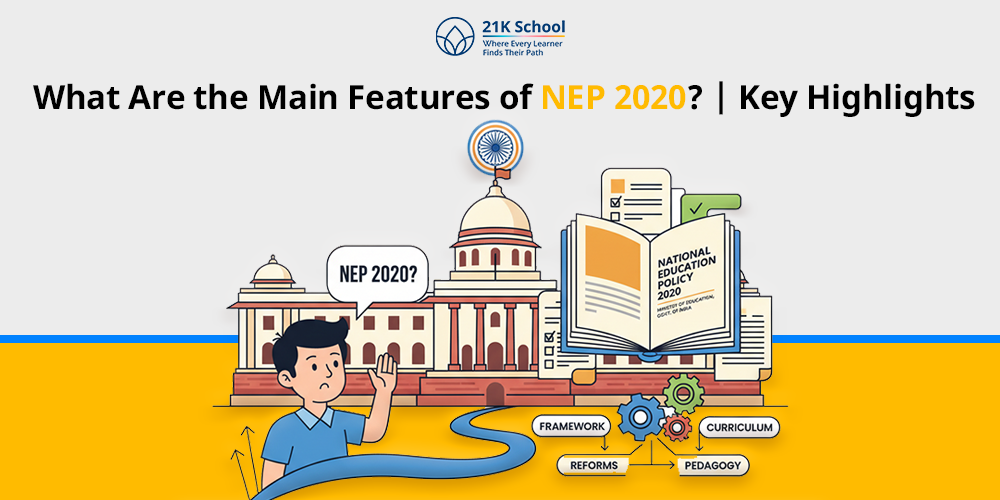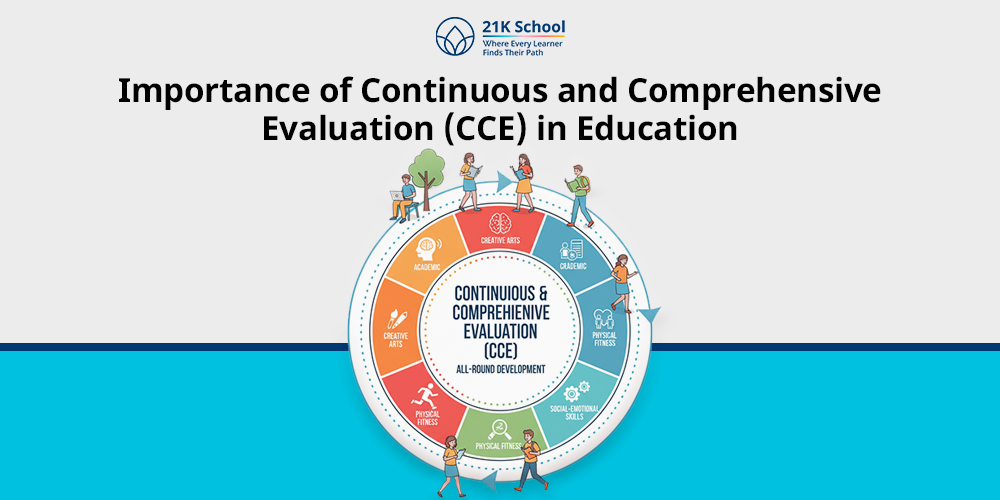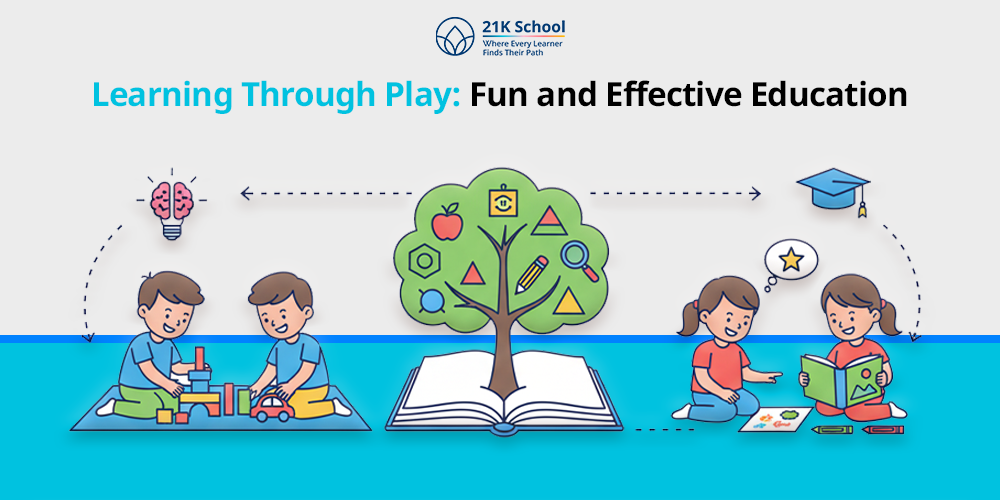
For shaping the future, education in India is taking a diverse pathway. Students benefit from choosing a customised curriculum to offer various effective teaching techniques for their career growth.
National Education Policy (NEP) 2020 is one of the transforming opportunities for students to gain a diverse knowledge and learning landscape to improve efficiency.
People in the modern world believe that the education system in the 21st century is not only limited to gaining knowledge but also nurturing skills.
And to align everything an effective and transformative educational reform like National Education Policy (NEP) 2020 play a major role.
Let’s understand what are the main features of NEP 2020, an ideal way to redefine learning.
Table of Contents
- What is NEP 2020?
- Top 16 Features of NEP 2020: Transform Today’s Education
- 1. New Curricular and Pedagogical Structure (5+3+3+4)
- 2. Assessment Reforms
- 3. Stream or Subjects Flexibility
- 4. Teacher Education
- 5. Tertiary Education
- 6. Integrating Vocational Education
- 7. Educational Technology
- 8. Inclusive Education
- 9. Environmental Education
- 10. Early childhood Education
- 11. Internationalization
- 12. Open Learning
- 13. Flexibility in Course Structure
- 14. Holistic Multidisciplinary Education
- 15. Foundational Literacy and Numeracy (FLN)
- 16. Multilingualism and the Power of Language
- Conclusion
What is NEP 2020?
The National Education Policy 2020 (NEP 2020) is a framework designed by the Ministry of Education, Government of India for the Indian education system.
It is a replacement of the National Policy on Education, 1986 and announced on July 29, 2020.
“Education for All, Lifelong Learning for All” is a clear objective of the National Education Policy 2020.
Top 16 Features of NEP 2020: Transform Today’s Education
Mentioned below are top 16 features of NEP 2020: transform today’s modern education system for students:
1. New Curricular and Pedagogical Structure (5+3+3+4)
Reconstruction of the school system is one of the most important features of NEP 2020.
Instead of using a traditional learning approach like 10+2 format school, shifting towards a new 5+3+3+4 system.
This is ideal for the cognitive development of children. 5+3+3+4 system.
- Foundational Stage (5 years): 3 years of pre-school + grades 1 and 2
- Preparatory Stage (3 years): Grades 3 to 5
- Middle Stage (3 years): Grades 6 to 8
- Secondary Stage (4 years): Grades 9 to 12
2. Assessment Reforms
Choosing competency-based learning instead of rote learning where tests are held according to conceptual understanding, application, and analytical skills.
This evaluation offers a growth mindset by conducting exams twice a year, 360-degree feedback report, National Assessment Centre (PARAKH) for standardised assessments.
3. Stream or Subjects Flexibility
Selection of common streams like Science and Arts are old scenarios. Now students look for mix and match subjects based on their desire.
This is an ideal way to become unique, creative, and innovative to design your own educational journey.
A simple example includes a learner combination of Economics or History with Mathematics.
4. Teacher Education
Traditional education systems often neglect teacher education but in NEP 2020 it plays a major role to achieve success.
The National Education Policy 2020 ensures teachers minimum qualification should be 4-year integrated B.Ed. degree, professional development, recruitment based on merit. However, it sets 2030 as the target date for completing this minimum qualification.
Teachers with NEP 2020 get the chance to provide innovative teaching freedom.
5. Tertiary Education
NEP 2020 includes multidisciplinary and holistic education. The main objective is higher education institutions become capable of providing:
- Wide range of subjects.
- Encourage students to pursue diverse academic interests.
- A new umbrella body is proposed called Higher Education Commission of India (HECI) to effective regulation.
- Achieve a 100% Gross Enrolment Ratio (GER) for pre-school to secondary level by 2030, while the 50% GER target is for higher education by 2035.
6. Integrating Vocational Education
In the modern education system, integrating vocational education is important to learners’ growth.
And NEP 2020 makes sure students have vocational training by making them job-ready and entrepreneurial.
From grade 6 students can get access to various vocational courses to boost confidence and bridge the skills gap.
7. Educational Technology
Technology in education is a key pillar of NEP 2020 where students learn from various sources like apps, videos, and e-learning platforms for personalised education.
This showcases that students can become future-ready to meet global needs.
A learning approach like blended learning is an ideal combination of both classroom and online learning.
8. Inclusive Education
NEP 2020 promotes inclusive education where teachers create a positive learning environment to welcome all kinds of students no matter their abilities.
From slow learners to students with disabilities everyone is treated the same and gets equal opportunities to learn and grow.
For providing justice and equity in education it is an ideal approach especially to support gender inclusion and tribal education.
9. Environmental Education
One of the main features of NEP 2020 is environmental awareness and responsibility.
By promoting environment-friendly activities like eco-clubs, plantation drives, and local environmental projects students are able to understand their responsibilities towards society.
Teachers must focus on environmental practices such as waste management and water safety and purity.
10. Early childhood Education
NEP 2020 prefers early childhood education includes Early Childhood Care and Education (ECCE) for children aged 3 to 6 years.
It ensures an effective foundation which is important for lifelong learning.
Some common methods for early childhood learning include play-based, activity-oriented curriculum etc.
11. Internationalization
The opportunity to connect with global education is a feature of NEP 2020. In this ways students gets chance to:
- Learn in top international universities who set up campuses in India.
- collaborate with global learners to share content and knowledge.
- Making Indian universities globally competitive.
12. Open Learning
Open learning is an ideal way in which learners can select when, where, and how they will study.
NEP 2020 offers this freedom to every student to reduce the challenges of traditional schooling.
Open and distance learning from various universities like IGNOU and use of online platforms, MOOCs, and virtual classrooms ensures smart learning.
13. Flexibility in Course Structure
Entry and exit options feature in higher education is an amazing feature of NEP 2020. By this way learners can customise their educational pathway.
- A certificate after 1 year, diploma after 2 years, and degree after 3 to 4 years.
- Students can pause and resume education as per convenience.
- An Academic Bank of Credits (ABC) will store students’ credits digitally for transfer.
14. Holistic Multidisciplinary Education
Education under NEP 2020 is not limited to textbook learning but also gives opportunities to develop intellectual, emotional, ethical, and physical growth.
This is done by promoting:
- Arts, sports, and life skills.
- Project-based learning and experiential learning.
- Promote community participation and volunteering.
- Provide multidisciplinary education.
15. Foundational Literacy and Numeracy (FLN)
Foundational Literacy and Numeracy (FLN) focuses on teaching every student basic reading, writing, and arithmetic skills by Grade 3.
By this way students can deal with real life situations and compete in the future.
16. Multilingualism and the Power of Language
Multilingualism means a skill of using multiple languages in the learning. It is an amazing way to develop cognitive skills, cultural diversity, and academic achievement.
The power of language in the real-world builds a strong educational foundation which improves academic performance and problem-solving skills.
Conclusion
The National Education Policy 2020 aims to enhance education. Instead of using rote learning the framework uses play-based, holistic, and inclusive education.
The policy mainly focuses on multidisciplinary education, digital integration, vocational skills, collaborative learning.
Implementing these popular features ensure students skills development, career growth, and job security.
NEP 2020 is an ideal way to prepare for 21st century challenges and opportunities.



